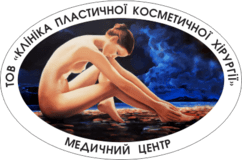Poltava, prospekt Vitaliia Hrytsaienka 9 Weekdays: 8:30-15:00, Weekend: weekend +38 (0532) 56-02-11+38 (095) 688 25 07
Rehabilitation after rhinoplasty
Rhinoplasty is a major surgery which involves cutting of large sections of skin, cartilage and bone tissues. It helps to perform the removal of crook in the nose, make nose tip reconstruction, change the nose size and correct its asymmetry. After rhinoplasty the patient should pass the rehabilitation period. Let's consider what the consequences might be after rhinoplasty and how the recovery goes.
 The steps of the rehabilitation process after nasal plastics:
The steps of the rehabilitation process after nasal plastics:
- Immediately after surgery the plastic surgeon puts the plaster bandage onto the patient’s nose. It is being worn for 7 days. During this period, there is swelling, bruising and pain.
- The plaster bandage is removed on the 7th day. Then you can gradually return to normal life, but you should avoid high loads. Bruises pass off in 2-3 days after removal of the bandage. Swelling decreases during 3 weeks and completely disappears within 3-4 months. First results can be assessed in 4 months.
- The complete recovery of cartilage and bone tissues takes about 8-12 months.
Scarring
Rhinoplasty can be performed in two ways: the open and closed method. Closed technique involves the dissection of the skin on the inside of the nostrils, and that is why there are no visible traces of wounds on the nose or areas around it after the wounds are healed. If the correction does not involve the hidden incisions, then they are made on the most obscure areas where the scar can be hidden by the natural skin folds. These areas include the folds of the nose and the contour of the nostrils and columella (the barrier between the nostrils). If the patient wants to get rid of the scars, laser resurfacing may be done in a year after the intervention.
Swelling
Swelling is a natural reaction of the body onto any serious intervention. When there is an injury of vessels during the dissection of tissues, the liquid is formed, and it results in the swelling. On average, it can be present from 7 to 20 days. Place of localization can be either directly at the area of intervention as well as at adjacent areas. If the swelling is only growing and the area that it occupies is becoming larger, then it is necessary to report these symptoms to your doctor.
Hematomas
It is also a natural response to trauma of the blood vessels. Hematomas can spread to areas near the nose and the areas under the eyes. The doctor may administer the special ointments or compresses to remove the hematomas.
Pain
Pronounced pain may occur during the first 2 days after surgery. This is a natural reaction to the injury during the correction. Gradually, the pain will decrease, which takes 2-3 weeks on average.
Side effects
Due to the characteristics of the organism, some side effects may occur in the postoperative period. Some of them may be temporary, and some will require subsequent correction. It is important to entrust the operation to experienced professionals. The professionals of our clinic will minimize the side effects that may occur due to the natural reaction of the body in the course of rhinoplasty.
Side effects after rhinoplasty:
- Loss of smell;
- Nose deformity;
- Difficult breathing;
- Growth of tissues that cover the respiratory tract;
- Inflammation of the periosteum;
- Callus;
- Pronounced scarring;
- Suppuration;
- Sepsis.
Diet during the rehabilitation period
 In order to pass the rehabilitation period in the safest and quickest way, you should support your body with proper nutrition. In the first place, it is necessary to avoid stagnation of water in the body, as well as reduce the intake of salt, smoked products, spices and carbonated beverages during rehabilitation. In order to improve metabolism, it is necessary to abandon sugar, fatty and fried foods, limit the amount of carbohydrates and control the amount of proteins. In order to make sure that useful elements are absorbed in the best manner, it is necessary to split meals and eat 5-6 times a day.
In order to pass the rehabilitation period in the safest and quickest way, you should support your body with proper nutrition. In the first place, it is necessary to avoid stagnation of water in the body, as well as reduce the intake of salt, smoked products, spices and carbonated beverages during rehabilitation. In order to improve metabolism, it is necessary to abandon sugar, fatty and fried foods, limit the amount of carbohydrates and control the amount of proteins. In order to make sure that useful elements are absorbed in the best manner, it is necessary to split meals and eat 5-6 times a day.
How to speed up the healing process?
Each clinic has a special course that will reduce the duration of the rehabilitation process. It can be assigned to receive magnetic resonance therapy or special ointments and compresses to relieve bruising and swelling.
- During rehabilitation it is forbidden to do the following:
- Sneeze during 2 months;
- Swim in a pool, sauna or in open water;
- Be subjected to strong physical stresses;
- Take sunbathes, visit the solariums;
- Smoke and drink alcohol;
- Take medications without consulting with a plastic surgeon.
Recommendations of physicians for the postoperative period:
- You should sleep on your back by placing a high pillow under your head;
- You should avoid stress;
- You should take vitamins;
- You should normalize your sleep;
- You should observe a diet.
Patients should remember that regardless of the operation quality and the professionalism of the plastic surgeon, the recovery process after rhinoplasty cannot be fast. But if you follow all the recommendations, you can speed it up greatly and it will be able to avoid complications.
specialists of the Clinic for Plastic Surgery
20-09-2017
Similar news
